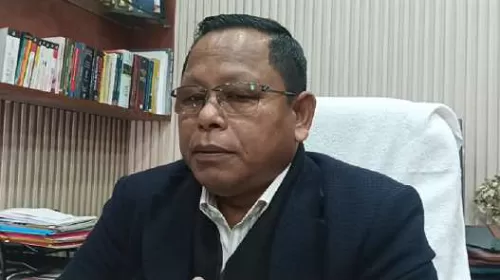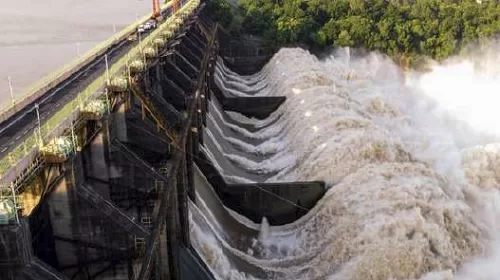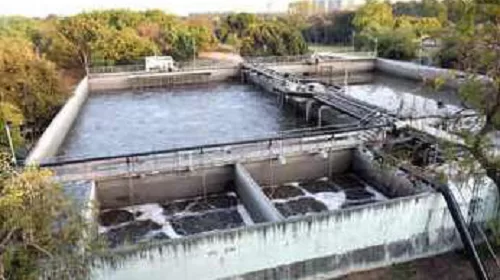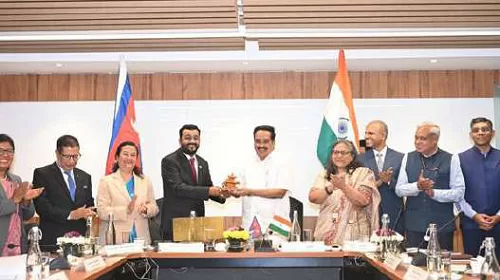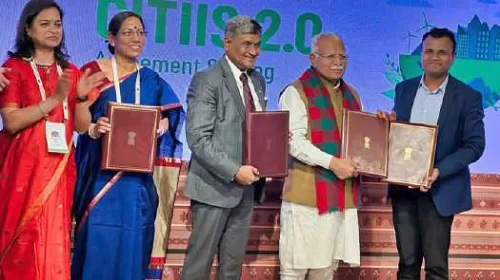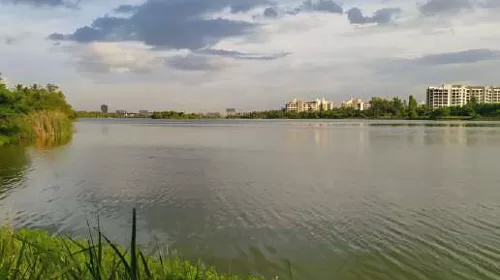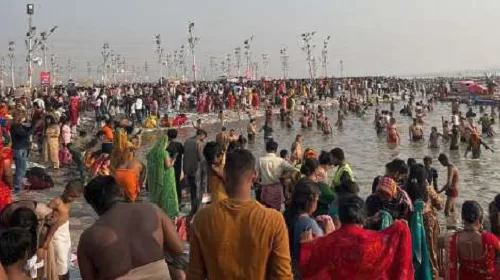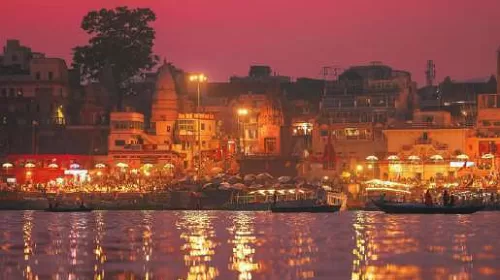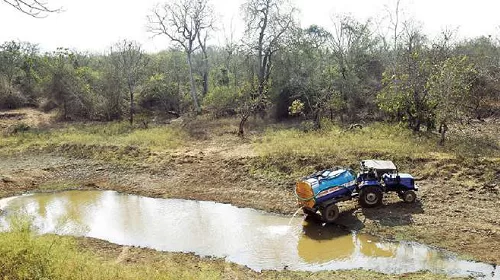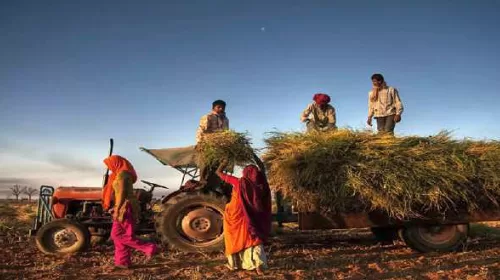The Meghalaya government has initiated efforts to rejuvenate over 741 drying water sources that are rapidly drying up due to the adverse effects of climate change. The announcement was made by Public Health Engineering (PHE) Minister Marcuise N. Marak, who stressed the urgency of the situation and the measures being taken to restore vital water sources across the state. The Meghalaya government has identified over 741 critical water sources that are at risk of depletion. Chief Minister Conrad K. Sangma has formed a Climate Council to oversee restoration efforts. The…
Read MoreDay: April 1, 2025
India’s Water Infrastructure Sector Has Opportunities Of Rs.1 Lakh Crore: Report
A recent report by Share India Securities highlighted the rapid growth of India’s water and wastewater market, which is projected to expand at a compound annual growth rate (CAGR) of 11.6 percent, reaching USD 17.9 billion by FY29. It said, “Government-led initiatives such as the Jal Jeevan Mission are driving significant infrastructure investments, unlocking an annual opportunity of Rs.1,000 billion in the sector”. However, the country faces a major challenge — only 30 percent of its wastewater is treated. To address this, the union government has planned to set up…
Read MoreNMC To Recycle Treated Wastewater From New Gangapur STP For Civic Facilities
Nashik: In a first, the civic body plans to recycle treated wastewater from its new sewage treatment plant (STP) in Gangapur on the outskirts of the city, and use this water for various municipal facilities and works. The new STP was constructed two years ago under the govt. scheme AMRUT (Atal Mission for Rejuvenation and Urban Transformation). Now, treated water from the plant will be reused for city gardens, tree plantations, traffic islands, industries that need water for processing, and construction activities. The Nashik Municipal Corporation (NMC) has already received…
Read MoreIndia, Nepal To Sign MOU To Strengthen Cooperation In Drinking Water, Sanitation And Hygiene
India and Nepal are set to sign a MoU aimed at strengthening cooperation in drinking water, sanitation and hygiene sectors on Monday, in Delhi. Nepal’s Minister for Water Supply, Pradeep Yadav, reached Delhi on Saturday to participate in the signing ceremony. Joint Secretary of Nepal’s Water Supply Ministry, Meena Shrestha, confirmed this development to ANI and said the aim of the agreement is to develop the water resources, access to clean water, promotion of water sanitation, waste management “The aim of the agreement is to develop the water resources, access…
Read MoreTripura Scientists To Deploy Indigenous Water Purification Tech At BSF Outposts
Tripura scientists are rolling out an indigenous water purification system at BSF outposts to ensure safe drinking water for troops. The initiative promises to enhance living conditions by using cost effective and eco-friendly methods. A number of Border Security Force (BSF) outposts which are located in remote areas along the India-Bangladesh border have long struggled with severe drinking water shortages due to the difficult terrain and lack of accessible water sources.The problem worsens during the monsoon season when heavy rains render the already rugged roads impassable, cutting off vital water…
Read MoreTreated Water From Apartments To Fill 30 Lakes In Bengaluru
Buoyed by the success of filling up 14 parched lakes with tertiary treated water from its sewage treatment plants (STPs) to tide over the summer water crisis of 2024, BWSSB says it will now fill up over 30 lakes across the city by drawing treated water from nearby apartment complexes. The water authority’s plans come even as apartment complexes have been complaining that the ambitious plan announced last year to facilitate diversion of treated water to industries hasn’t made any headway. The utility, however, said it would lay dedicated pipelines…
Read MoreMaha Kumbh Solid Waste Perfectly Managed, Ganga Clean As Tap Water—2 Scientists From India, Us Find
A preliminary study by Stanford University’s Richard Dasher and Institute for Competitiveness’ Amit Kapoor has found that the management of toilets, solid waste, and faecal sludge at the recently concluded Maha Kumbh was “99.9 percent perfectly managed” despite enormous challenges. The 45-day Maha Kumbh, held on the banks of the Ganga in Prayagraj, saw participation from over 65 crore people. Approximately 4,000 hectares of reclaimed land along the river was transformed into a temporary city. Kapoor, with a team of 10 researchers, assessed various aspects of water and sanitation management…
Read MoreRestoring The Divine Glory Of River Ganga: Namami Gange Programme Achieves Significant Milestones
The Namami Gange Programme, launched in 2014 by the Government of India, represents one of the most comprehensive initiatives to restore the Ganga River through pollution abatement, ecological restoration, capacity building, and community engagement. Against available resources of Rs.20,424.82 crore for 2014-2023, the National Mission for Clean Ganga (NMCG) has disbursed Rs.16,648.49 crore, about 82% of budgetary provisions. The programme’s Rs.42,500 crore financial outlay serves as a sanctioning space rather than an immediate expenditure target, covering current spending and future commitments over a 17-year infrastructure lifecycle. The Hybrid Annuity Model…
Read MoreSaving Nagarahole: Water Tankers step in as Several Lakes Run Dry
As temperatures rise, Nagarahole Tiger Reserve faces increasing water scarcity, with six of 18 lakes in the wildlife-rich Antharsanthe zone drying up. This zone, known for its tigers, elephants, black panthers, deer, pythons, and wild dogs, sits adjacent to the Kabini backwaters. The Forest Department has responded by deploying water tankers to replenish dry lakes, making multiple trips daily to provide relief to thirsty animals and prevent them from straying into human settlements. The department prioritizes refilling lakes near village outskirts, particularly along the HD Kote-Manandavadi Road, to reduce human-wildlife…
Read MoreCrop Diversification to reuse: Haryana meets 85% Water Conservation Goals
Haryana saved 5.8 billion cubic meters of water from March 2023 to February 2025, reaching 85% of its target according to HWRA. The state aims to save 6.9 BCM by March 2025 through wastewater reuse, efficient cultivation, crop diversification, micro-irrigation, and groundwater recharge. The initiative began after HWRA identified a deficit of 14.03 trillion liters between water availability (20.9 trillion) and demand (34.96 trillion) for 2020-2022. This is critical as 60% of the state falls in the ‘red’ category for groundwater exploitation. For 2025-26, Haryana plans 244 new water bodies…
Read More

